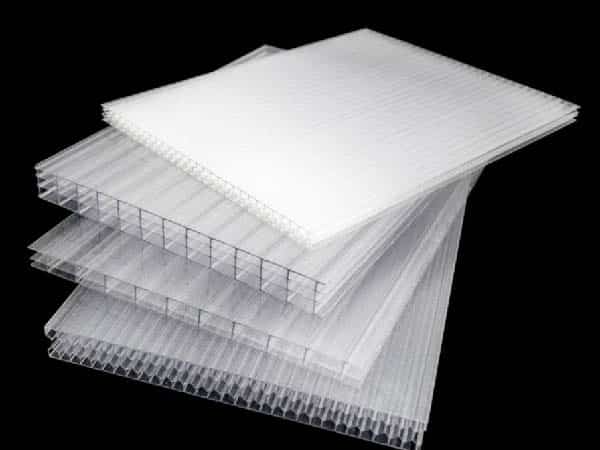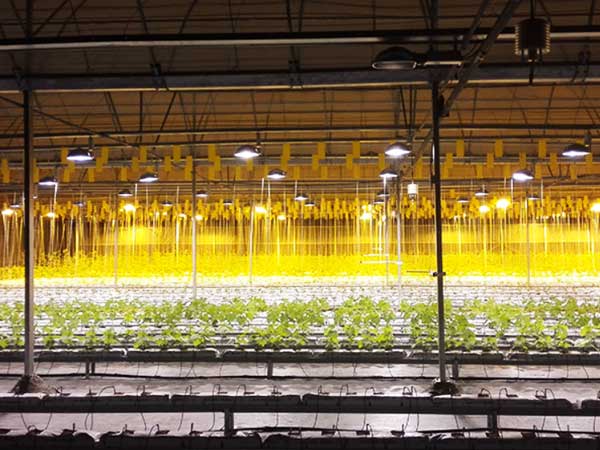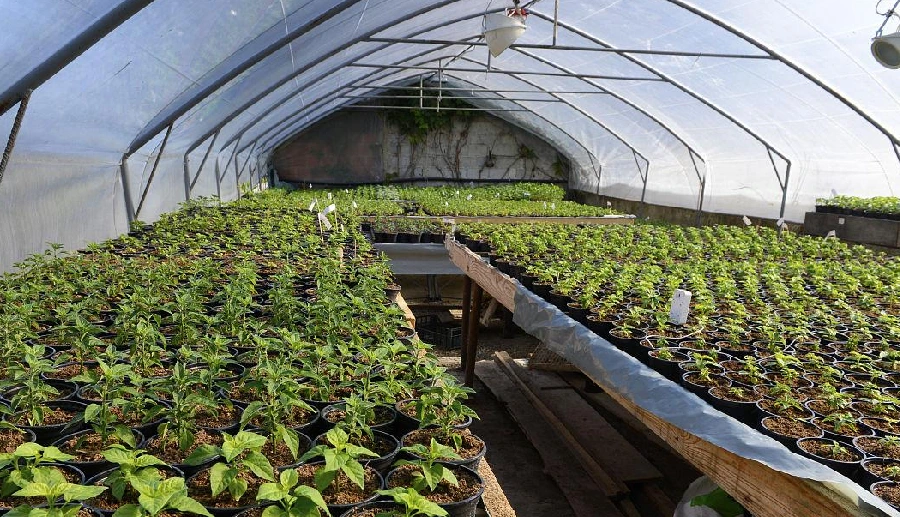
With extreme weather becoming more common, greenhouses play a crucial role in today’s farming. They manage the surroundings to allow crops to flourish throughout the year.
But have you ever wondered which plants thrive best in greenhouses all the time? What’s the secret to planting in them all year round? And, is it possible for every vegetable to grow in any greenhouse, no matter the location?
Let’s dive deep into these questions and discover what you can grow in a greenhouse all year round.
Greenhouse Tech Shapes What Crops You Can Grow All Year
The type of greenhouse technology you use is crucial in the variety of crops you can grow throughout the year. We categorize greenhouses into four types, each with technological advancement: low-tech, mid-tech, high-tech, and smart greenhouses.
The sophistication of the greenhouse determines its ability to mimic and control environmental conditions, thus influencing the diversity of crops that can thrive year-round. The more advanced the greenhouse, the wider the variety of crops you can cultivate at any time of the year.
Let’s dive into the specifics of these greenhouse categories and the crops they typically support. However, remember that this information might not hold for areas with extreme weather conditions—whether too cold, too dry, or too hot—as the local climate also significantly determines what you can grow.
1. Low-Tech Greenhouses
These greenhouses stick to the basics, using simple tech and materials like ploy. They lean on natural light and have just enough to manage temperatures. You’ll find windows or vents for fresh air, straightforward heaters for the cold, and hands-on watering.
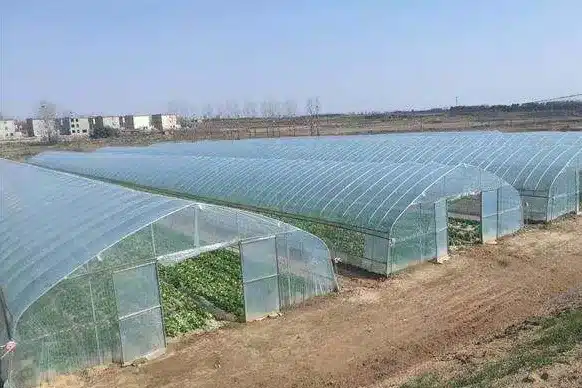
Perfect for them are cooler-weather veggies like lettuce, spinach, and kale. They also suit tough medicinal plants like mint, plus frost-friendly flowers such as marigolds and cornflowers.
2. Mid-Tech Greenhouses
Upgrading to mid-tech means better insulation with advanced materials, like double-layer plastics. These greenhouses might have systems for easier automatic or semi-automatic air and cooling management. Even watering and feeding plants get a tech boost for better efficiency. Heating is also upgraded, possibly with geothermal methods or efficient heaters for the chilly months.
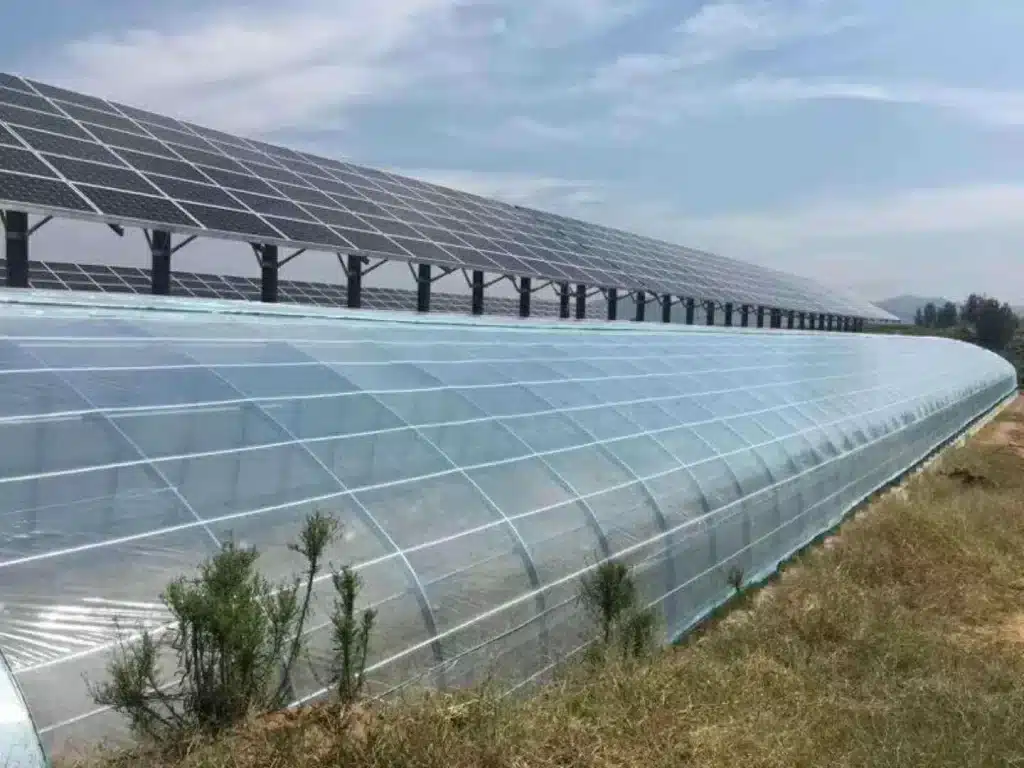
In this setup, warmth and light-loving crops like tomatoes, cucumbers, and peppers thrive. It’s also great for fruits that can be managed with some control, like strawberries and small blueberries, and for flowers needing a medium level of care, such as roses and lilies, which show off their beauty and bloom well here.
3. High-Tech Greenhouses
These greenhouses push the limits with the latest tech and materials for top efficiency. They boast automated systems to perfectly control climate – temperature, humidity, light, and CO2 are all adjustable. This setup ensures the ideal environment. It includes advanced watering and feeding systems that respond to plants’ needs. Artificial lights can extend growing seasons or add extra light. High-tech greenhouses might also use data analysis to fine-tune conditions and increase yields further.
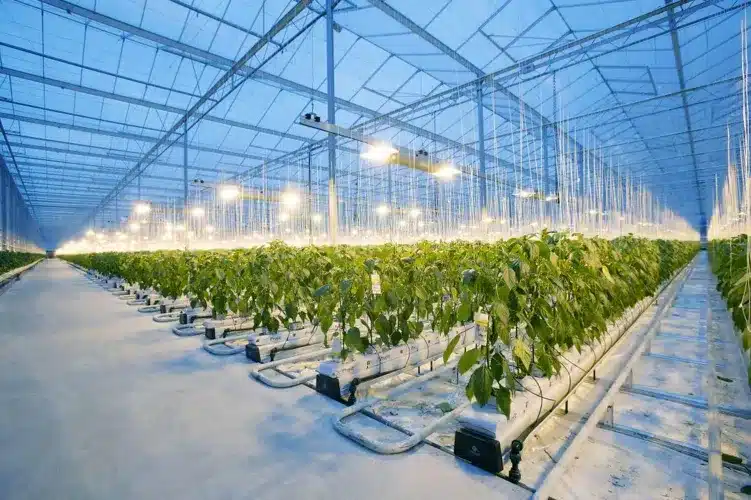
In this environment, crops with specific needs shine. This includes various veggies, fruits like guava and citrus that require precise climate control, and medicinal plants such as cannabis and basil. These plants can maximize their medicinal qualities here. High-value flowers like orchids also flourish, getting the right conditions to thrive.
4. Smart Greenhouses
Smart greenhouses take high-tech to the next level, merging the best in tech and design. They use the Internet of Things (IoT) for live monitoring and remote control. Equipped with the latest sensors, they adjust climate settings precisely – managing temperature, humidity, light, and CO2 perfectly.
You can run these greenhouses from your smartphone or computer, ensuring plants grow in the best possible conditions while using resources efficiently. Smart greenhouses also tap into machine learning and AI, learning from data to improve greenhouse management.
This setup suits nearly all crops, especially high-value ones with strict needs, providing ideal growth conditions.
Year-Round Greenhouse Crops for Various Regions
Our earlier discussion revealed that a greenhouse’s tech level is key in determining which crops to grow. But picking the right crops involves more than just technology. Looking at the location, climate, market demand, and economic factors is essential.
This approach suggests selecting plants that align perfectly with the local environment and market demands of various regions. By doing so, we aim for the best growth outcomes and financial gains.
1. For Cold Temperate Areas (Like Canada)
Greenhouses in chilly places such as Canada and Russia are great for growing warm-weather favorites like tomatoes, cucumbers, peppers, leafy greens, and herbs like lettuce, basil, and cilantro. The natural climate in these spots isn’t warm enough for these veggies all year, especially in winter.
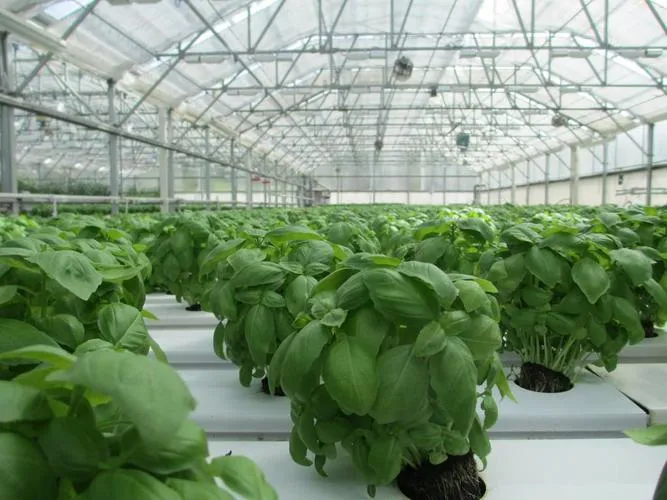
Greenhouses step in to mimic warmer climates inside, letting these plants grow in cold areas all year. They keep the right temperature and humidity and ensure plants get enough light. This way, plants that love warmth can grow and yield, even when cold outside.
2. Tropical and Subtropical Places (Like Thailand)
Warm areas like Thailand are great for year-round leafy greens and tropical fruits in greenhouses. These regions deal with hot temperatures, high humidity, and strong sunlight. Greenhouses protect plants from too much heat and sunlight with shade nets and good airflow. Ideal picks for these climates include leafy veggies like lettuce, and spinach and fruits like papaya and mango.
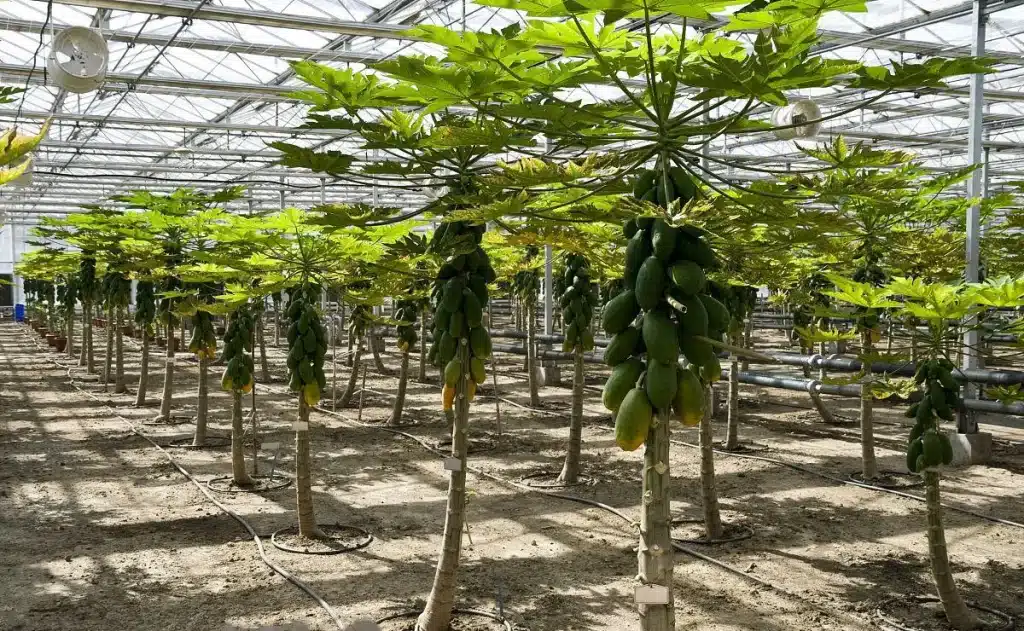
3. Dry and Semi-dry Regions (Like Egypt)
Countries like Israel and Egypt face challenges in farming due to limited water. Greenhouse tech comes to the rescue, allowing drought-tolerant crops to grow more efficiently and use water wisely. Greenhouses in these places often use smart watering techniques like drip and fog systems. These methods reduce water loss, ensuring plants get the moisture they need at their roots.
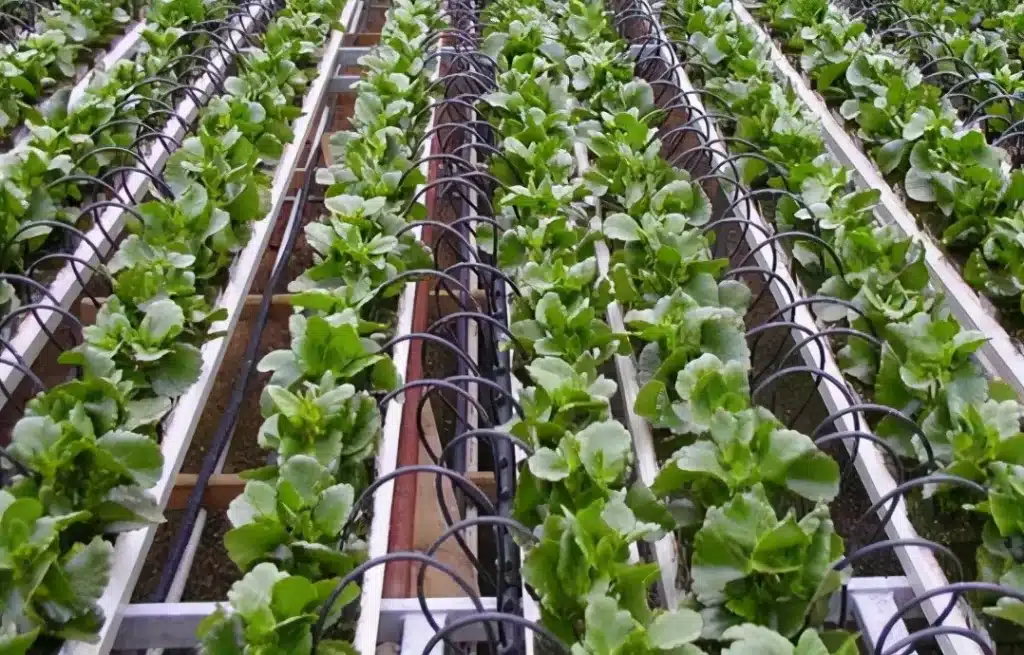
Reusing water from greenhouse condensation also helps save this precious resource. Crops that do well here include tomatoes, peppers, melons, and root veggies like potatoes and carrots. These crops are naturally drought-resistant but yield more and of better quality in a controlled greenhouse. Smart systems allow precise control over temperature, humidity, light, and water, maximizing yields using less water.
4. Soil Salinity Regions (Like the Middle East)
Traditional soil farming isn’t ideal in areas like the Middle East, where soil salinity is an issue. However, greenhouses can overcome this using soilless farming techniques like hydroponics or aeroponics. These methods support the year-round cultivation of vegetables such as tomatoes, cucumbers, and flowers suitable for hydroponics, dodging the soil salinity challenge.
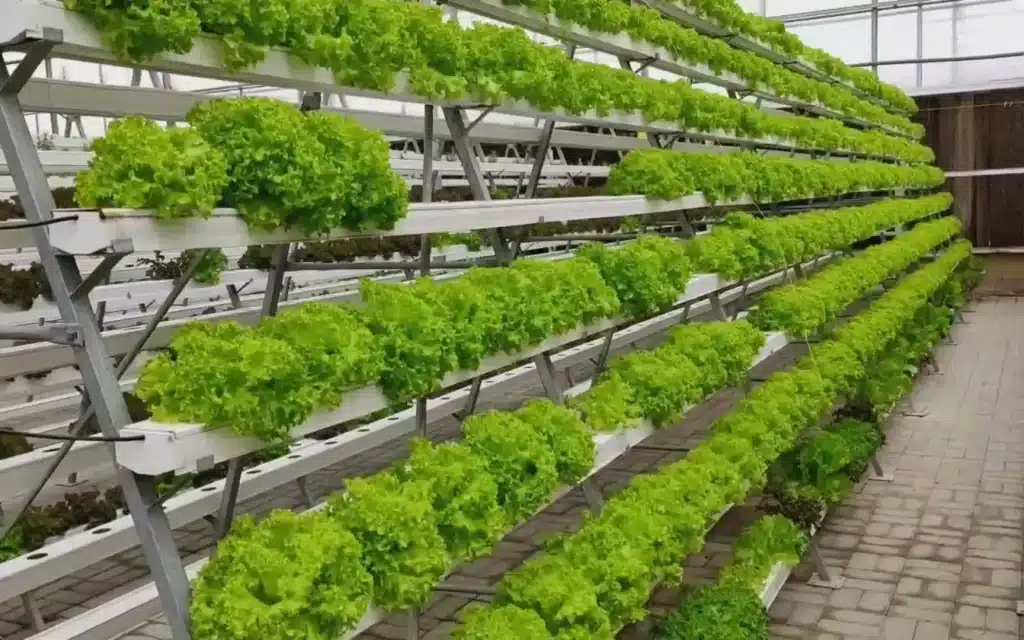
5. Developed Economies (Like the USA)
People in places like the USA and Germany want more fresh and organic produce. Greenhouses can focus on supplying high-quality greens, herbs, and special veggies like organic tomatoes and unique peppers throughout the year.
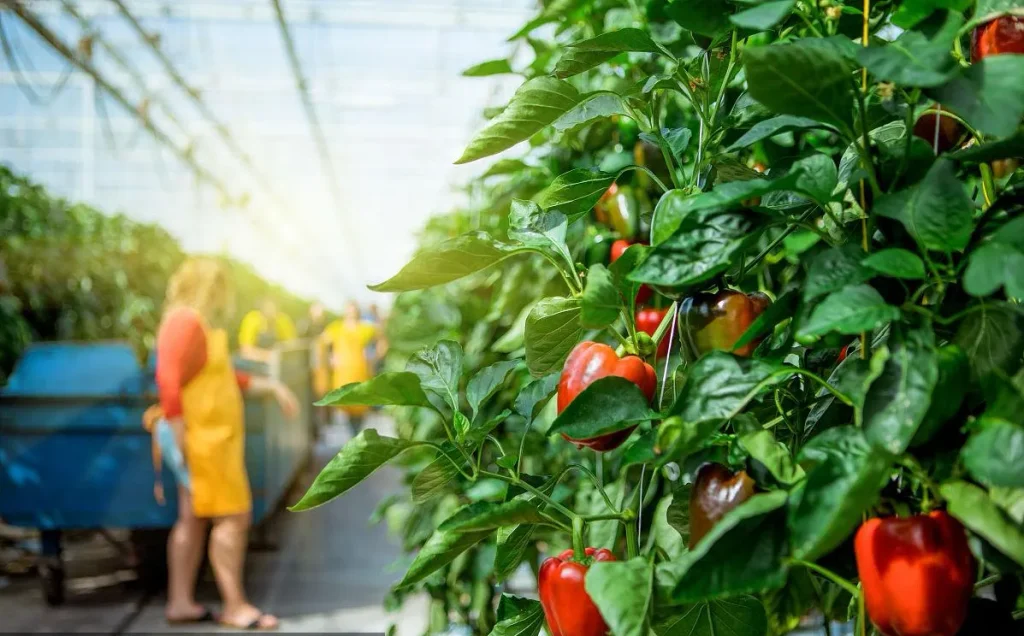
All things considered, commercial greenhouses provide a versatile solution to adapt to the unique conditions and demands of different regions worldwide. They enable year-round crop production almost anywhere, helping satisfy our planet’s growing food needs.
Future Greenhouse Farming Trends and Opportunities
Greenhouse farming’s future shines with major advances on the horizon in smart tech, soilless and vertical farming, energy efficiency, sustainability, and crop variety with tailored production. Thanks to IoT, AI, and big data, managing greenhouses will get much more accurate and hands-off.
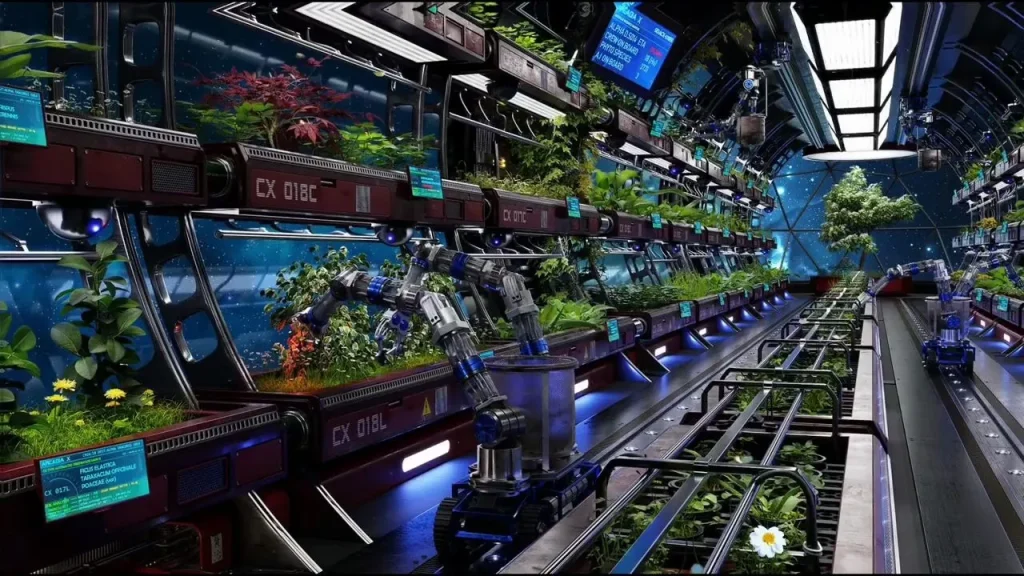
Smart energy use means future greenhouses can tailor the perfect growing conditions for different crops, leading to more efficient farming of a wide range. From veggies to tropical fruits and medicinal plants to exotic flowers, future greenhouses worldwide will suit all crops. Greenhouse tech might even reach into space, making growing food on the moon possible someday.
Conclusion
Commercial greenhouses let us grow various crops yearly, no matter the climate. We can reliably produce everything from veggies to tropical fruits with advanced control and innovative tech. This improves growing cycles and boosts yield and quality, supporting a stable, sustainable global food supply. So, commercial greenhouse farming is a vital piece of today’s agriculture, showing off the huge potential of tech to make farming more diverse and sustainable.
Whether you need a classic greenhouse, something with mid-level tech, or you’re aiming for a high-tech or smart greenhouse, INSONGREEN has got you covered. If you’re looking to boost your farming with different types of greenhouses, just reach out. We’re here to answer your questions right away.

